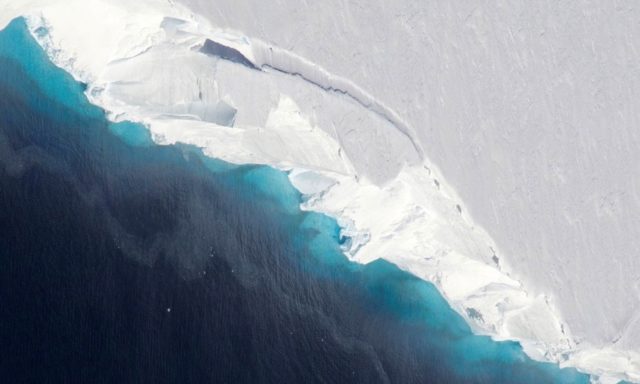A huge cavity has been discovered by the scientists at the bottom of a disintegrating glacier in Antarctica. It is indeed a matter of grave concern because the ice sheet is melting much faster as opposed to what expected earlier.
The cavity got discovered at the bottom of the massive Thwaites glacier. The team of researchers working as part of a study led By Nasa found the cavern. It was 300 meters (1000 feet) tall and two-thirds the size of Manhattan.
The cavity is big enough to have contained 14bn tonnes of ice as NASA said which has melted in the last three years.
According to a paper published in Science Advances, scientists were not expecting this rapid change in the ice on the glacier at some points.
The discovery of the cavity was possible because of ice-penetrating radar from NASA’s Operation IceBridge, an airborne campaign started in 2010 to study the links between the global climate and the Polar Regions.
Moreover, researchers utilized data from a constellation of Italian and German spaceborne synthetic aperture radars that are very high-resolution data, processed by radar interferometry technique that is capable of revealing the movement of ground surface below between images. There was also research aircraft monitoring the changes in polar ice.
Pietro Milillo, lead author, and scientist at the Nasa Jet Propulsion Laboratory said,
[The size of] a cavity under a glacier plays an important role in melting. As more heat and water get under the glacier, it melts faster.
As Milillo told The Guardian, a 14bn tonne of ice released from the cavity was already underwater, and it would not contribute to sea level rise. So that was not the primary concern. The insight that the paper revealed was that the interaction between the sea and ice was an important aspect.
A co-author of the paper and a research scientist at the Université Grenoble Alpes, Jeremie Mouginot, said that there was a wide gap between the floating ice and the bedrock at the bottom of Thwaites which ocean water could fill up and melt the glacier from below.
Thwaites, 120km-wide “monster glacier” could potentially add 0.6 meters to sea level with its continuing retreat, and it has substantial future implications, explained Jeremie. Currently, Thwaites Glacier is responsible for approx 4 percent of the rise of the global sea level, and the ice it holds can raise the ocean worldwide a little over 2 feet (65 centimeters).
The neighboring glaciers supported by Thwaites if melted, an additional 2.44 meters (8 feet) would add to sea levels, and in that case, coastal communities worldwide will be under threat.
Mouginot thinks further studies needed to know where and how Thwaites will decline. “The current question is not if the glaciers will retreat but at which pace.”
According to NASA, the hole is on the western side of the glacier, and the melting rate is about 0.6 to 0.8km per year since 1992, a rate that while stable was “extremely high.”
A co-author of the new study, Eric Rignot said “Understanding the details of how the ocean melts away this glacier is essential to project its impact on sea level rise in the coming decades.”
“We have suspected for years that Thwaites was not tightly attached to the bedrock beneath it,” Eric asserted. “Thanks to a new generation of satellites, we can finally see the detail,”
Thwaites, which is one of the toughest places to reach on Earth will now become better known than ever before. The U.S. National Science Foundation and British National Environmental Research Council are mounting a 5-year field project to find all the answers to most critical questions related to the processes and features of Thwaites. In the summer of 2019-20, the International Thwaites Glacier Collaboration will begin its field experiments in the Southern Hemisphere.
Milillo hopes the new results will be useful for the fieldwork of the International Thwaites Glacier Collaboration researchers. “Such data is essential for field parties to focus on areas where the action is because the grounding line is retreating rapidly with complex spatial patterns,” he said.






